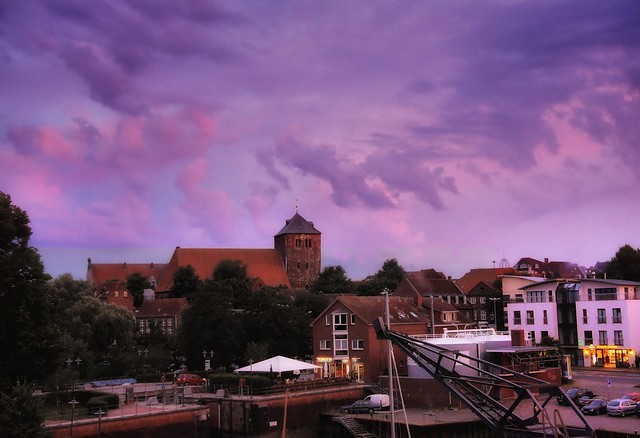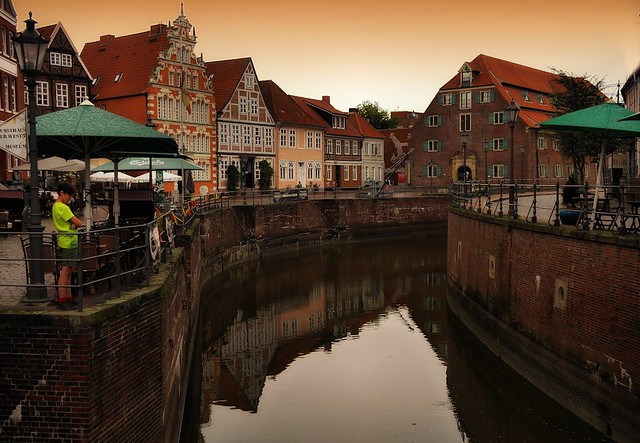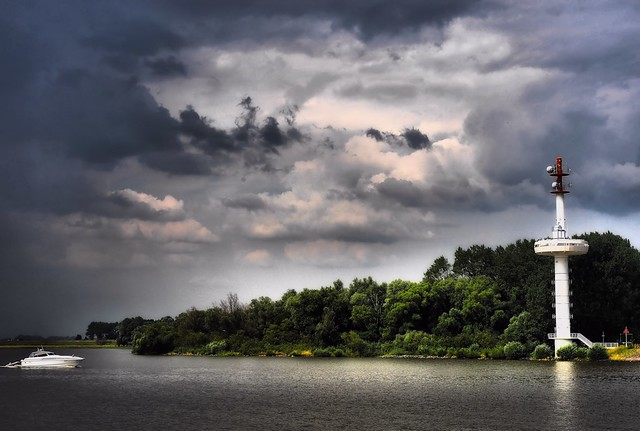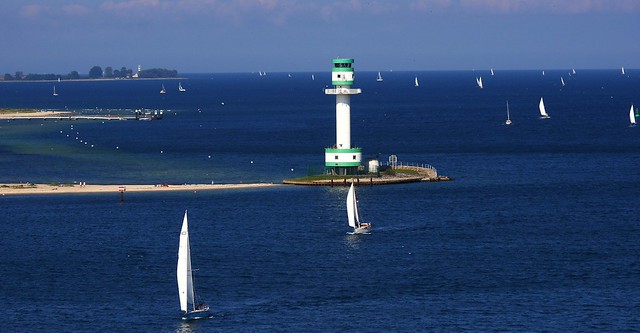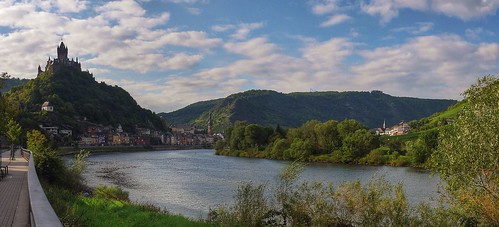Here in a pink version of a summer afternoon. This was the day before we had some serious rain, hail and thunder.
Below another afternoon version from the old harbor in Stade.
Cobbled street in old town, Stade
More from the net:
Stade is a city in Lower Saxony, Germany, and part of the Hamburg Metropolitan Region (Metropolregion Hamburg).
The city has a population of around 45,152. Administratively, it is the seat of the Stade district which covers approximately 1,266 sq kms.
Water plays the most important part in Stade, which becomes evident at the Old Hansa Harbour with its pretty 17th-century houses, where there is the Fish Market with its reconstructed wooden crane and tread mill, framed by the walls of the quay and some splendid half-timbered houses. In the streets of the old town there are monuments of almost all historical architectural styles, ranging from Gothic to post-modern.
The first human settlers came to the Stade area in 30,000 BC. The city was founded in 994 and, in 1209, Stade received the "Stadtrecht" (town privileges).
In medieval times (from the 1200s to the late 1600s), Stade was a prominent member of the Hanseatic League, but was later eclipsed by Hamburg. Stade was also occupied by Sweden from 1645 to 1712, and some of the buildings built by the Swedes are still in use today. In 1355 and in 1712, Stade suffered a plague epidemic which killed at least 30-40% of the city's population. During World War II, Stade remained completely untouched by allied bombings.
